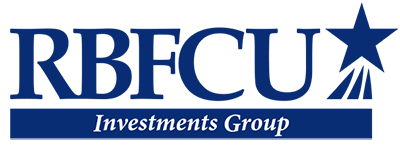Saving vs. Investing: How to Make Them Work for You
Has anyone ever told you to save for a rainy day? Or to invest in your future? Saving and investing come up often when talking about financial planning. While both are important to reach financial goals, there are key distinctions between them.

Saving is setting money aside in a less risky and accessible place — like a savings account1 — that you can use whenever needed. There is less risk involved with a savings account. Yet, other than any interest you may earn, there are limited growth opportunities. You only get out what you put in — plus any interest you may have earned.
With investing, however, there is more potential for gain — hence the appeal for many people who share a goal of financial growth.
Investment accounts2 come in many forms — stocks, bonds, funds and cash — but differ from savings accounts. That’s because the value of the assets in an investment account can, and likely will, fluctuate over time. Yes, investing carries with it the risk of loss, but it also can offer the possibility of greater reward for your efforts and patience over time.
Let’s look at what you might want to consider when determining whether you should save or invest — and why you might want to include both strategies in your financial plan.
Why save money?
Saving can help with short-term goals, like a dream vacation or a new car. Having money in savings can also provide a financial cushion to help sustain you financially during unexpected events. When something happens — a car needs repair, the water heater dies, there’s a sudden job loss or unexpected medical bill — an emergency fund3 or personal cash reserve can prove critical. To keep these emergency funds accessible, a simple savings account may be all you need to put together a cash reserve.
»Tip: A healthy cash reserve that covers six months of expenses can be helpful, but a cash reserve capable of covering expenses for 1-3 years may be even better.
Three sophisticated ways to save money
Establishing long-term financial stability with a cash reserve is something most people tackle gradually, over time. By implementing a systematic savings plan4 — the process of setting aside a specific amount from your paycheck either weekly, monthly or bimonthly — you can pay yourself first rather than waiting to see what’s left at the end of the month.
Another tool that may help you create a systematic savings plan is a payroll savings plan.5 If offered by your employer, a payroll savings plan allows a portion of your paycheck to be automatically deposited into an account of your choice, sending a designated amount to savings each time you are paid.
A third option to systematically save is to set up a recurring transfer from your checking account to your savings account, allowing you to “set and forget” as you automatically grow your savings each month.
Why invest your money?
As noted earlier, investing carries a risk of loss, but it also offers the possibility of increased wealth — especially when you commit to growing your money over a longer period. Many people become investors in order to meet specific, big-ticket long-term goals like higher education or retirement. You might even consider having separate investment solutions and strategies for each long-term goal.
For example, putting money into a 529 plan when your children are young may increase the amount of money you later have to spend on their college tuition over time. The potential for gain in this scenario — and, similarly, for retirement savings — is a primary reason why many people turn to a financial advisor, if only to explore their options.
»Tip: The amount of money that one “should” invest versus save depends on your goals and personal circumstances such as age, income and risk tolerance. Keep those factors in mind and discuss them with your financial advisor.
Before we move further away from discussing savings — and start exploring investment strategies more thoroughly, let's recap the differences between the two approaches.
Saving vs. Investing: At A Glance
Saving
- Short-term goals
- Funds more available
- Risk tends to be lower
- Potential yield is generally lower
Investing
- Long-term goals
- Funds may be inaccessible for long periods of time
- Risk can be low or substantial
- Yield may be fiscally higher
Common ways to invest
For many people, investment products such as IRAs and 529 education plans hold the greatest appeal. Again, those solutions help address specific goals, such as retirement and education planning.
But what if you're interested in a more robust strategy and are willing to take a bit more risk with your money? Managed accounts and passive income strategies could be possible solutions.
Passive income strategies6 typically require minimal work from investors to generate potentially higher returns.
Examples include:
1. Cash equivalents and deposits
Short-term investments whose yield is typically tied to the current interest rate, cash equivalents and deposits may allow you to earn a return on your money while also allowing you to readily access funds, making them beneficial as cash reserve accounts.
2. Bonds
With bonds,7 you are in essence loaning money to a company, municipality, the government or government agency at a specified rate of interest over the life of the bond. The principal — with interest — is repaid to you when the bond reaches maturity.
3. Dividend stocks
Some companies return a portion of profits to shareholders through quarterly payments called dividends.8 A company can pay a dividend in the form of cash, stock, property or other forms. Cash dividends are when a company makes dividend payments in the form of cash.
4. Real estate investment trusts (REITs)
A REIT9 allows you to invest in large-scale, income-producing real estate — and earn a share of the income produced by commercial properties such as shopping malls, apartments, hotels, office buildings, warehouses and more. You may gain income produced through these properties without having to buy or manage the property.
5. Rental property
Purchasing properties and renting them out has the potential to generate significant income, though this can require more work, expense and initial investment than some other passive income strategies.
The takeaway
Having a personal cash reserve is critical to long-term fiscal stability. The money you set aside in your savings account will be available to you when you need it. But if you're interested in creating a more robust financial plan — one with the potential to help increase your wealth — then it might be time to meet with a professional to explore other investment strategies and solutions.
Ready to take that next step in your financial planning? RBFCU Investments Group and our team of financial advisors can help you find the right investments that fit your risk tolerance, timeline and your financial goals.




